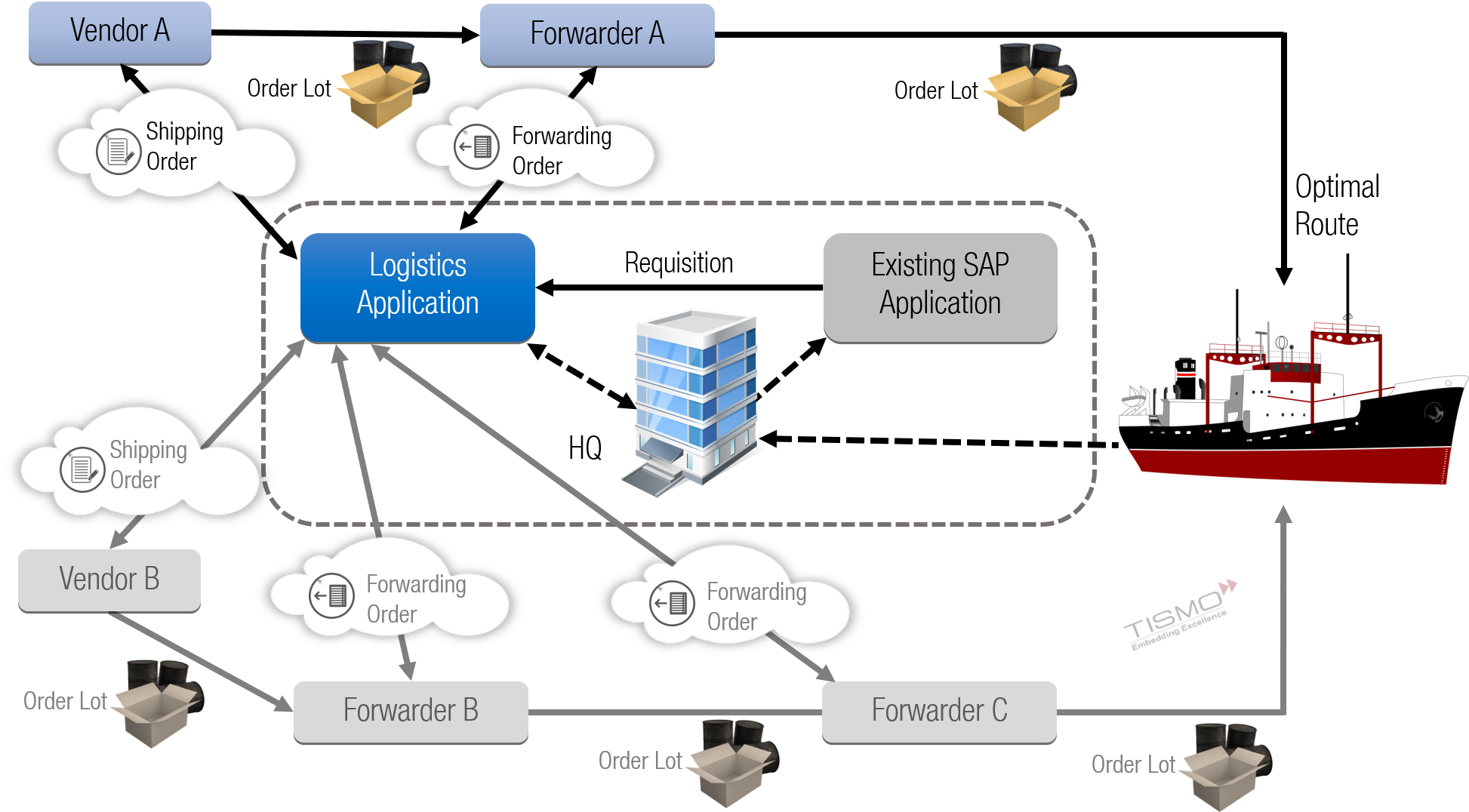The Context
A recent study published by MarketLine, a leading commercial intelligence company, projects that the global sea freight market will reach USD 210 billion by 2021. To exploit this market wave, a well known player in the international sea freight business was developing a world-class system to enhance the efficiency of their shipping logistics process. Tismo was entrusted with the responsibility of developing the logistics management web app that would form the core of this system.
The Problem
Tismo’s task was to develop a web based application that would take care of requisitions raised by shipping vessels across the globe. The app would effectively have to manage the client’s logistics supply chain and would also have to accommodate forwarding and tracking of goods carried by the vessel.
The Solution
Tismo developed a logistics management web app to manage the client’s supply chain. The web app was built using C#/.NET and followed the MVC architectural pattern. The user interface was developed using HTML 5, CSS and JavaScript along with jQWidgets. A Microsoft SQL Server was implemented as a shared server with the client’s existing SAP application. The logistics management web app used SQL queries to retrieve data from the SAP application.
Functionalities of the logistics management web app included shipment load planning, outbound and inbound shipment scheduling, transportation mode selection, shipment routing optimization, shipment tracking etc. The app also supported features like 2-step authentication, automatic generation of shipping orders guarding against malpractice and duplication, reminders, order escalations etc.

Optimal Supply Chain Workflow using Logistics Management web app
The logistics management web app mainly focuses on three kinds of users – HQ (Head Quarters), Vendor and Forwarder. The HQ users have administrative privileges and manage all the requisitions from different vessels. The Vendors dispatch requisitioned goods as per ‘Shipping Orders’ received from HQ. These goods are termed ‘Order Lots’. The Forwarder’s role is to deliver the ‘Order Lots’ to the vessels, as per the ‘Forwarding Orders’ received from the HQ. The Vendors and Forwarders can update the status of their ‘Order Lots’ within the logistics management web app, and the HQ can monitor the supply chain with ease. Additionally, the HQ can raise order escalations in case of delays, report issues and set reminders.
A dedicated planning module was developed as part of the logistics management web app to allow HQ users to assign particular requisitions to vendors and forwarders. The module provided the list of available Vendors and Forwarders, the list of outgoing orders and available stock and the schedule of the target vessel. Thus, the HQ was able to effectively plan the shipping orders and optimal routes. Every forwarder and vendor had access to the web app showing the real time status of each order. This mutual visibility enabled requisitions which involved multiple vendors or multiple forwarders to be easily planned and executed.
Summary
Tismo developed a logistics management web app using C#/.NET. The user interface was developed using HTML 5, CSS and JavaScript along with jQWidgets. Features included shipment load planning, outbound and inbound shipment scheduling, transportation mode selection, shipment routing optimization, shipment tracking etc. This was instrumental in optimizing the client’s logistics supply chain.

